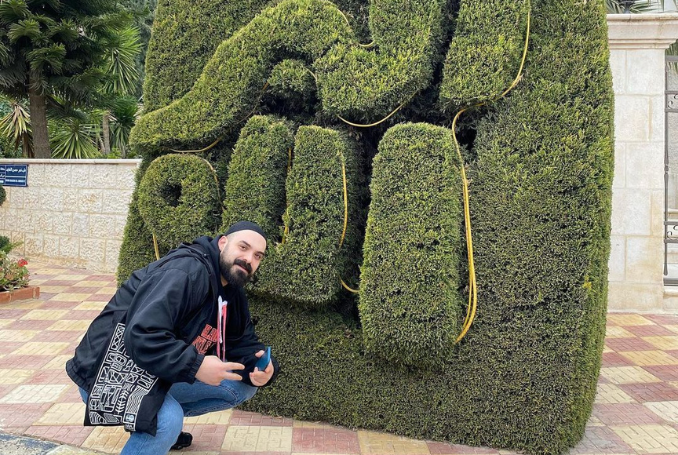Resistance, Music, And Existence Under Occupation

David Harrop
On my first night in Nablus, Palestine in 2011, I experienced a group of young Palestinians jumping and dancing with disrespect for their culture and their spirit.
Dance to music; What could be more fun? Rhythm and sweat come and go, feeling more than thinking. Dancing can give you a moment of freedom. Dance can be resistance as a ritual and as a channeling of rebellious energy.
Last year I was on the west coast and did a series of interviews with social workers. As a social work specialist in the UK, I am particularly interested in local forms of social work that have emerged from years of struggle.
It is a form of radical social work in refugee camps that has emerged on the streets and can be seen as mass practice or barefoot social work.
It is an anti-bureaucratic, radical political practice based on the tradition of Paulo Freire's social pedagogy, where workers and volunteers work in a politically informed manner and seek to create a platform for education and self-expression. (Pedagogy of the Oppressed 1968)
Much of their business focuses on creating and empowering young people to discover their life stories and their creativity to express their experiences.
Although the roots of this culture are known, what is important is not the effort to recreate the old culture, but the effort to create new works that seek to challenge and reflect the current experience of oppression. This is due to the great desire of their creativity to be unique and come from them, which has the potential to create new social and political relations.
The backdrop of this colonized music/film/art/fashion remains heartbreaking and unsettling as young people reflect on their present and future in the context of 75 years of oppression.
How can social workers help young people find ways to express themselves and what moments and spaces can we use to do this? What is the role of the social worker in providing the necessary platforms and resources for support and empowerment?
What are the tensions surrounding this expression, its aesthetic and political context? How can all of this shape and guide national discourse, and illuminate and fuel the machine of resistance throughout Palestine and the Diaspora?
I once met the author of a study on youth in a Daesh refugee camp during the first intifada. During our conversation, he told me about his brother, the late musician Riyad Awwad, who distinguished himself in the resistance during the first intifada.
He wrote music for the Intifada, sometimes using poems by leading Palestinian writers, played and played in cafes and businesses. The records are often confiscated by the Israelis because they believe they could incite violent resistance.
Riyad was arrested and tortured, although he was not charged. His work was recently reissued by UK label Majazz Project, which aims to preserve Palestinian musical heritage alongside new trance, dancehall and techno, as well as Bedouin psychedelia.
In the West Bank, I interviewed youth and street project leaders from Daesh and Aida refugee camps who participated in street activities.
One man told me that he was so traumatized by the violence in Deisha as a child that he temporarily lost the ability to speak. Through her dedication to the Ibda Center youth group, she joined the Dabke dance troupe and by immersing herself in music and movement, she was able to overcome her trauma and is now a successful director of international acclaim.
Another social worker from the Aida camp described her despair when children as young as 10 told her they no longer wanted to live and only wanted to die.
One evening I was sitting with a social worker friend and wept when she and I saw a group of deaf children playing in the ruins of a semi-detached house in Doha.
Another colleague, who is involved in theater and puppetry, seeks to involve people in creativity and says that any resistance is a wonderful activity, and he defends all activity as beautiful resistance.
Deisheh's other project explains how they try to empower young women through art and how the group is very busy wanting to make rap songs. It apparently went viral when posted online, and they believe these examples are helping to push the boundaries of gender perception and be a potential source of empowerment.
Resistance can take many subtle and less obvious forms. In addition to active protest and physical confrontation, there are many forms of protest through reporting and critical creativity that embody and articulate the experience of resistance, seeking voices and attempting to ignite the imagination of others.
All of these initiatives are about how to live better in the context of the workforce, and by providing a similar platform, they create a space for voices and narratives. Another young man noted that the level of depression and helplessness is very high. Any activity that provides space for self-expression is protective and builds resilience by protecting against mental health risks.
Although contemporary Palestinian culture has many dimensions, there is an aesthetic that surrounds the principles of building and expressing resistance. DNA manifests itself through a mix of traditional and modern ethnicity.
There are bands like 47Soul who have brought the dabke feel into the 21st century with Sham Feet, formed to take the energetic electronic dance music from coffee shops and car stereos and encourage young people to gather around the sound systems.
Many young Palestinians, inspired by the world of techno, seem to want to move to Berlin, where they feel they can immerse themselves in the culture of music, film, etc. and bring their Palestinian DNA with them.
There has been an outpouring of grief recently following the death of Palestinian DJ and techno producer Odai Masri, who championed music as a means of solidarity and resistance. He chairs the annual EXIST festival, which seeks to build bonds of solidarity between the highly creative Palestinian artistic community and the global art community in Ramallah and Berlin.
What unites their large transnational family is their desire to use art for critical environmental impact and their commitment to anti-colonialism within the Palestinian context and beyond.



